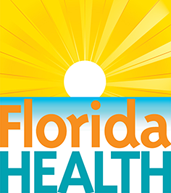It's a New Day in Public Health.
The Florida Department of Health works to protect, promote, and improve the health of all people in Florida through integrated state, county, and community efforts.
Infant Safe Sleep
Community Health Planning, Promotion, and Communication - DOH-Charlotte
- CharlottePromotion@FLHealth.gov
- 941-624-7200
-
Mailing Location
1100 Loveland Blvd.
Port Charlotte, FL 33980

Expecting or caring for a baby? Take these steps to help babies sleep safely and reduce the risk of sleep-related infant deaths, including sudden infant death syndrome (SIDS).
In 2022, there were about 3,700 sudden unexpected infant deaths (SUID) in the United States, according to the U.S. Centers for Disease Control and Prevention (CDC). There were:
- 1,529 deaths from Sudden infant death syndrome (SIDS).
- 1,131 deaths from unknown causes.
- 1,040 deaths from accidental suffocation and strangulation in bed.
CDC supports the recommendations issued by the American Academy of Pediatrics (AAP) to reduce the risk of all sleep-related infant deaths.
See How to Keep Your Sleeping Baby Safe: AAP Policy Explained to learn more about AAP's policy on safe sleep.
Parents and caregivers can help create a safe sleep area for babies by taking the following steps recommended by the CDC:
- Place your baby on his or her back for all sleep times — naps and at night.
- Use a firm, flat (not at an angle or inclined) sleep surface, such as a mattress in a safety-approved crib covered only by a fitted sheet.
- Keep your baby’s sleep area (for example, a crib or bassinet) in the same room where you sleep, ideally until your baby is at least 6 months old.
- Keep soft bedding such as blankets, pillows, bumper pads, and soft toys out of your baby’s sleep area. This includes blankets, pillows, bumper pads, and soft toys.
- Do not cover your baby's head or allow your baby to get too hot. Signs your baby may be getting too hot include sweating or his or her chest feels hot.
Learn how to create a safe sleep environment for a baby in your home by exploring an Interactive Safe Sleep Environment Tool from Safe to Sleep®.
For more information about a safe sleeping environment for infants, visit the Safe Sleeping Environment webpage of the Florida Department of Health.



Connect with DOH